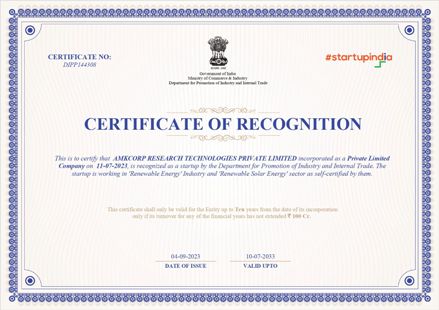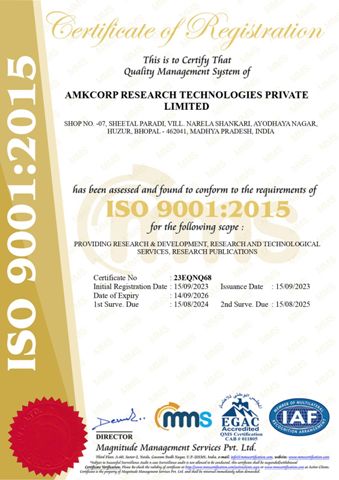
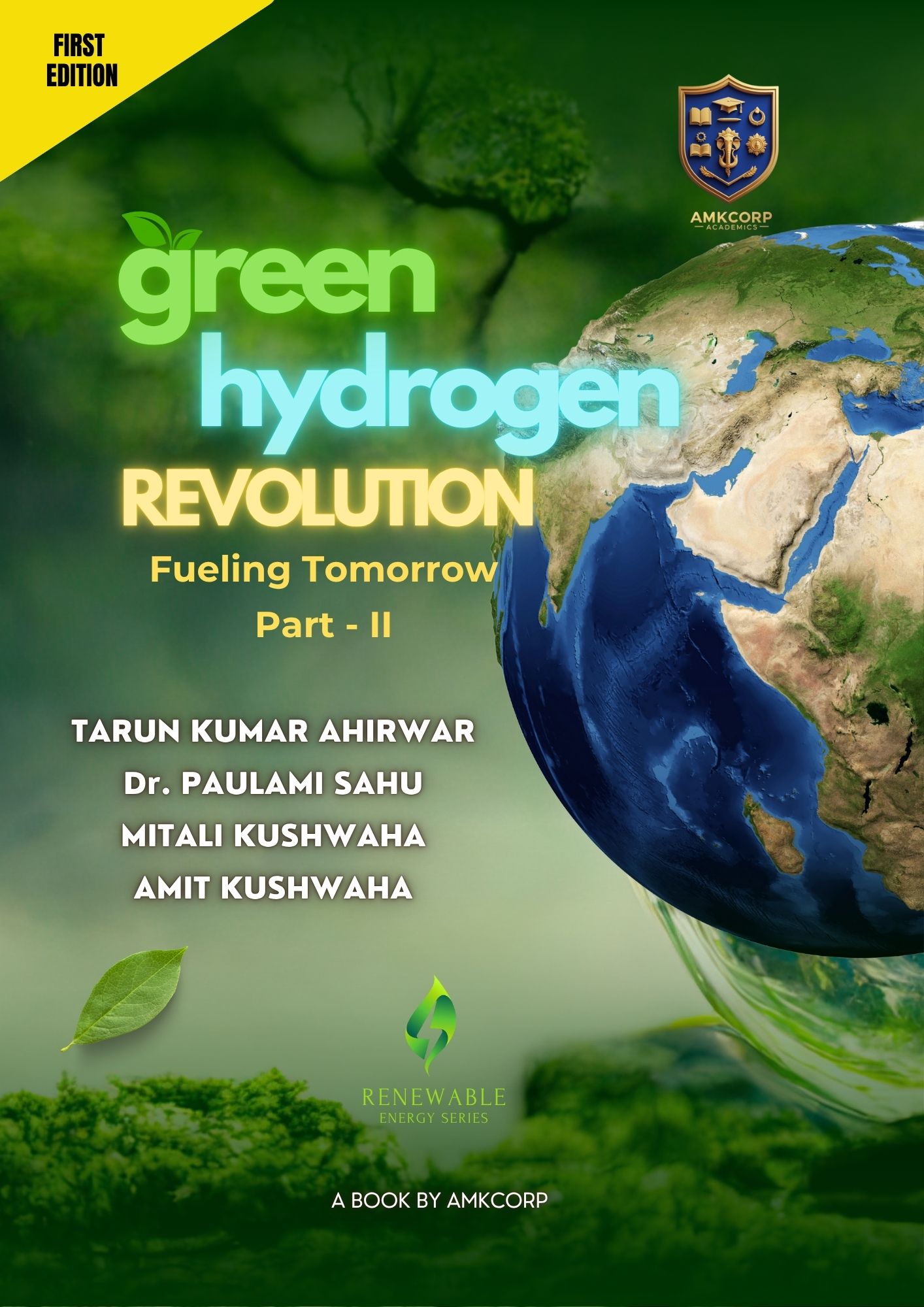
₹ 1599.00
$149.00
GREEN HYDROGEN REVOLUTION
PART-2
FUELING TOMORROW
AUTHOR(S) -
TARUN KUMAR AHIRWAR, Dr. PAULAMI SAHU, MITALI KUSHWAHA, AMIT KUSHWAHA

DOI – 10.61909/AMKEDTB112545
FOREWORD
ANEŽKA ŠEBEK
Professor Emeritus, Parsons School of Design, The New School, New York, USA
Genre/Subject – Green Energy, Green Hydrogen, Renewable Energy
Book code – AMKEDTB112545 pgs: 270
ISBN(P) – 978-93-6556-379-5
Published – 04-11/2025
ISBN(E) – 978-93-6556-985-8
Published – 04/11/2025
Edition – 1
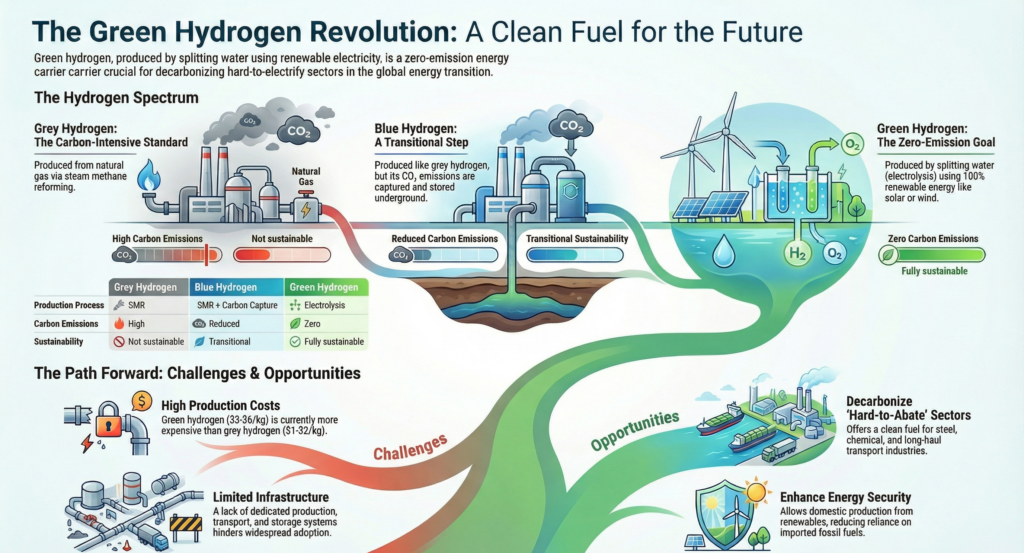
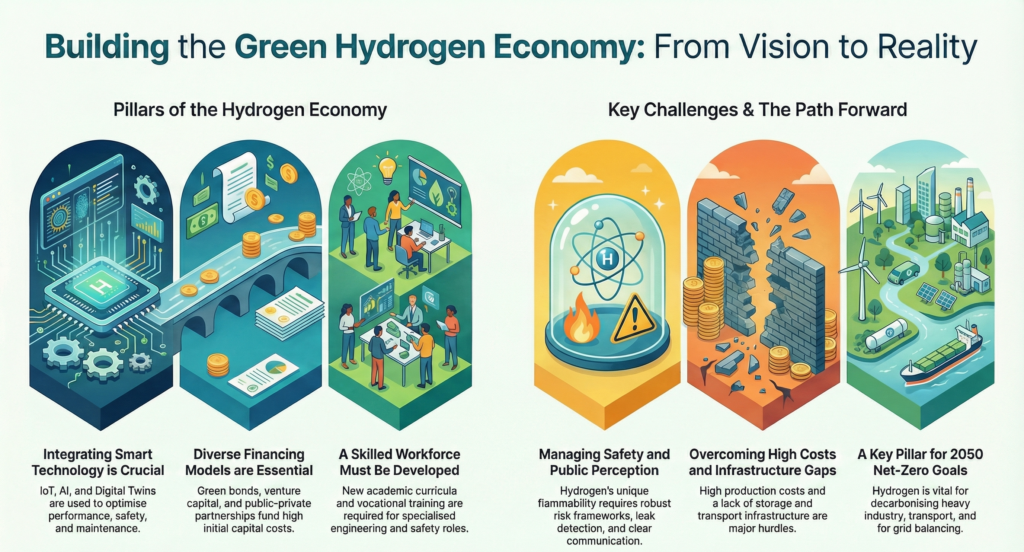
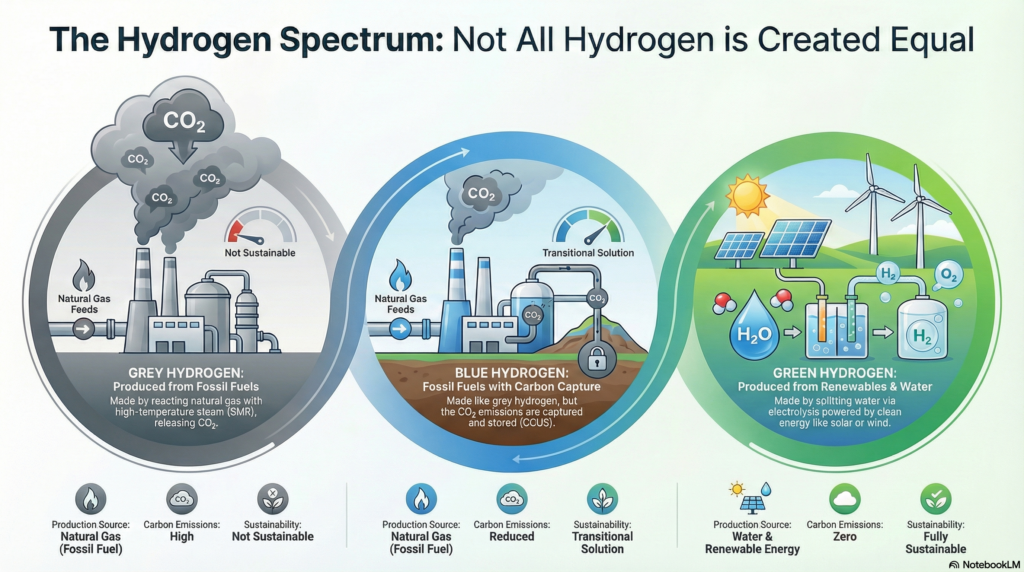
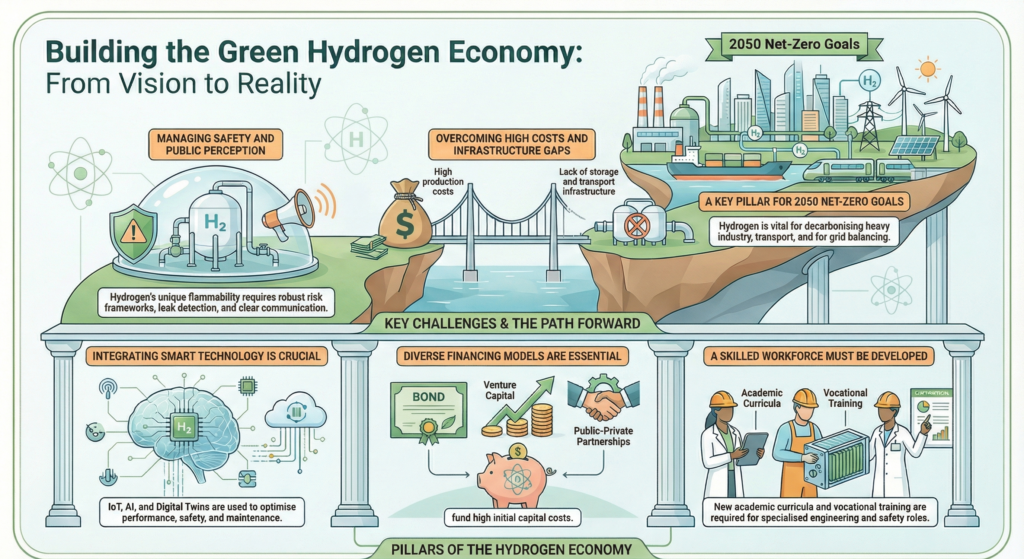
AUTHOR(S)

TARUN KUMAR AHIRWAR
Tarun Kumar Ahirwar is an Energy Scientist and PhD Research Scholar at the Sustainable Energy Laboratory, School of Environment and Sustainable Development, Central University of Gujarat. His doctoral research, Sustainable Wind Energy System Development for Low-Wind Speed Regions and its Potential Application for Green Hydrogen, CO₂ Abatement, and Green Buildings, focuses on optimizing wind-energy systems to enhance performance in low-wind regions and enable sustainable hydrogen production and carbon mitigation.
Holding 12 Intellectual Property Rights in sustainable energy—including utility and design patents for low wind speed turbine systems and velocity-regulation devices—he represents a new generation of innovators bridging laboratory research with practical application. His public-engagement footprint includes 25+ articles on energy and environmental conservation in national and regional media. He was conferred “Environmentalist of the Year” (2011) at the 4th International Congress of Environmental Research (SVNIT, Surat).
Within academia, he has served as Member, Academic Council (2018) and Convener, Students’ Council (2016–2018) at Central University of Gujarat, where he actively contributed to institutional governance, academic policy and sustainability initiatives. Alongside research, he works as a Renewable Energy Consultant, specializing in micro-wind, hybrid wind–solar systems and green-hydrogen infrastructure for campuses and communities.
Affiliation: Sustainable Energy Laboratory, SESD, Central University of Gujarat
Focus Areas: Wind-energy concentrators (Frusta-Flow), green hydrogen, low-wind optimization, CO₂ mitigation, sustainable campuses

Dr. PAULAMI SAHU
Dr. Paulami Sahu is an award-winning geologist and environmental scientist with over a decade of teaching and research experience. A Gold Medalist from the University of Calcutta, she currently serves as Assistant Professor at the School of Environment and Sustainable Development, Central University of Gujarat. With 86 publications, 10 design patents, and numerous accolades—including including the Order of Merit (2002) and Gold medal (2012) from University of Calcutta for securing First Class First position in M.Sc. in Geology; Best technical paper in 1st National Essay Competition (Category-II, Technical Papers) under Jal-Kranti Abhiyan 2015-16 organized by Central Ground Water Board (CGWB), Govt. of India (2016) Gangadas Sharda Scholarship (2001); Prof. N.N. Chatterjee Memorial Book Grant (2001) from Presidency College Kolkata, National Scholarship (1995) etc.Dr. Sahu is a leading voice in sustainable development. Her work spans national and international research projects funded by CSIR (GoI), DST (GoI), UGC (GoI) etc., and she has mentored dozens of scholars across Ph.D., M.Phil., and M.Sc. levels. This book reflects her passion for science, innovation, and environmental stewardship.

MITALI KUSHWAHA
With an illustrious career spanning 17 years, Mitali is a dynamic leader who marries her extensive expertise with an unwavering passion for innovation. Armed with a Master’s in Energy, Environment, and Management Engineering, along with a Bachelor’s in Electrical and Electronics Engineering, she represents the perfect fusion of technical prowess and environmental consciousness. As the visionary force behind her company, Mitali’s leadership fuels its journey towards sustainable excellence. Beyond her corporate role, she continues to actively contribute to academia and research, reflecting her commitment to advancing knowledge.

AMIT KUSHWAHA
With an impressive track record spanning over 15 years, Mr. Amit Kumar Kushwaha stands as a paragon of experience and innovation. Armed with a Master’s in Thermal Engineering and a Bachelor’s in Automobile Engineering, his expertise embodies a perfect synergy of technical brilliance and creative thinking. As the driving force behind his company, Amit’s dynamic leadership propels his team towards excellence. Beyond the boardroom, his fervent commitment to academia and research shines brightly. Active participation in scholarly pursuits reflects his dedication to ongoing learning and intellectual growth.
FOREWORD BY

Anežka Šebek
Anežka Šebek is a filmmaker and computerized visual effects producer turned scholar whose work applies systems thinking to the interconnected challenges of design, technology, and sustainability. She was one of the founders and a faculty member in the Master of Fine Arts program in Design and Technology at Parsons School of Design (1998–2021), she earned her Ph.D. in Sociology in 2016 with research on social systems and housing inequality in post-industrial cities of the northeastern United States. Currently a Visiting Professor at IIT Gandhinagar in India, she teaches courses integrating sustainable design, engineering, and human factors. Her current research explores regional ecologies in the northeastern United States and investigates how artificial intelligence can enhance resilience and equity in emerging energy and food systems.
In the global pursuit of a sustainable future, hydrogen stands as both a challenge and a promise — a bridge between scientific discovery and climate responsibility. Green Hydrogen Revolution – Part II captures this transformative moment, where innovation converges with implementation, guiding industries, researchers, and policymakers toward a resilient energy future accessible to people of all economic and cultural backgrounds.
The author’s approach is both comprehensive and forward-looking. The first volume illuminated the scientific and technological foundations of green hydrogen; this second part advances the discourse by addressing safety protocols, digital transformation, financial ecosystems, and workforce development — the very elements required to turn theoretical potential into tangible reality. It proposes a roadmap for harnessing an abundant source of energy essential to humanity’s progress on a planet of finite natural resources.
What distinguishes this work is its systems-thinking perspective. It recognizes that building a hydrogen economy is not only a matter of electrolysis efficiency or renewable capacity but also of human capital, global collaboration, and risk governance. The chapters on Industry 4.0, emerging technologies, and commercialization pathways provide readers with a strategic lens to understand how hydrogen can anchor a low-carbon industrial ecosystem by 2050 and beyond.
As nations race to meet net-zero commitments, such scholarship is crucial in countering the entrenched dominance of fossil fuel corporations. It unites engineering precision with economic foresight and policy vision, reflecting the multidisciplinary nature of the energy transition itself.
I commend the author for presenting an integrated roadmap — one that transcends conventional boundaries between science, industry, and society. This book is not merely a technical compendium; it is a call to collective action, urging us to innovate responsibly and collaborate globally.
May this contribution inspire a new generation of researchers, entrepreneurs, and leaders to accelerate the realization of a hydrogen-powered world.
ABOUT BOOK / ABSTRACT
The world is entering a new era of energy transformation — one defined by the urgent pursuit of net-zero emissions and a decisive shift away from fossil fuels. At the center of this transition stands green hydrogen — a clean, versatile, and high-energy fuel that has the potential to redefine how industries, transportation systems, and entire economies operate.
The Green Hydrogen Revolution Part-II explores the science, technology, and global vision behind hydrogen’s rise as the fuel of the future. It traces the evolution of hydrogen energy, explains its production pathways, and reveals how innovations in electrolysis, renewable integration, and fuel cell technology are making large-scale hydrogen deployment both practical and sustainable.
This book provides a comprehensive foundation for understanding every dimension of green hydrogen — from production, storage, and distribution to its diverse applications in power generation, industry, and mobility. It also highlights the economic, policy, and environmental frameworks that are driving hydrogen’s adoption worldwide.
Beyond the technical details, The Green Hydrogen Revolution captures the global movement toward clean energy independence, illustrating how nations, researchers, and industries are uniting to create a carbon-neutral future. Through detailed analysis, real-world examples, and forward-looking perspectives, the book shows how hydrogen can serve as the missing link between renewable energy sources and a sustainable, circular economy.
Whether you are a student, researcher, policymaker, or energy professional, this book is designed to inform, inspire, and empower — offering both scientific depth and strategic vision.
The revolution has already begun — and green hydrogen stands at its very heart.
BOOK MAP
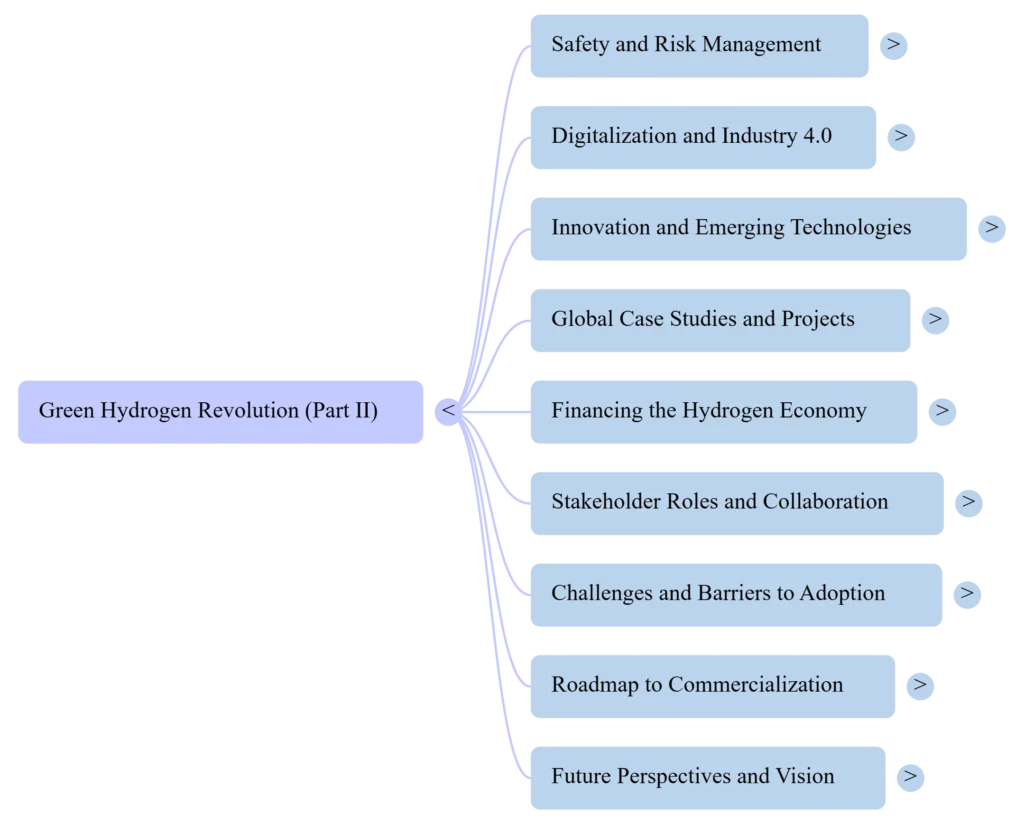
TOC / BOOK MAP (Extd.)

CHAPTERS
Chapter 14: Safety and Risk Management
Explores the physical properties, hazards, and regulatory frameworks essential for safe hydrogen handling and infrastructure.
Presents best practices for detection, monitoring, emergency response, and workforce safety in the hydrogen industry.
Chapter 15: Digitalization and Industry 4.0 in Hydrogen
Highlights how IoT, AI, blockchain, and data analytics transform hydrogen operations and supply chains.
Emphasizes predictive maintenance, digital twins, and cybersecurity as enablers of a smarter hydrogen ecosystem.
Chapter 16: Innovation and Emerging Technologies
Examines next-generation hydrogen technologies such as advanced electrolyzers, nanomaterials, and hybrid systems.
Focuses on global breakthroughs shaping efficiency, cost reduction, and scalability in hydrogen production.
Chapter 17: Global Case Studies and Demonstration Projects
Showcases international hydrogen initiatives across Europe, Asia-Pacific, and North America.
Extracts lessons from real-world projects to illustrate best practices and scalable success models.
Chapter 18: Financing the Hydrogen Economy
Analyzes capital structures, green bonds, venture funding, and government incentives driving hydrogen investments.
Provides strategies for de-risking projects and attracting sustainable finance for clean energy transitions.
Chapter 19: Stakeholder Roles and Collaboration
Maps the ecosystem of policymakers, industries, financiers, and civil society shaping the hydrogen economy.
Underscores the importance of multi-stakeholder partnerships and coordinated global governance.
Chapter 20: Education and Workforce Development
Discusses the skill requirements and training models essential for a hydrogen-ready workforce.
Promotes inclusion, upskilling, and academia-industry collaboration to build long-term human capital.
Chapter 21: Challenges and Barriers to Adoption
Identifies the technical, financial, and regulatory hurdles impeding hydrogen deployment.
Proposes realistic solutions and policy pathways to overcome market and infrastructure barriers.
Chapter 22: Roadmap to Commercialization
Outlines stepwise approaches to scaling hydrogen technologies from lab to market.
Details frameworks for partnerships, supply chain development, and global rollout timelines.
Chapter 23: Future Perspectives and Vision
Projects hydrogen’s role in achieving net-zero goals and integrating with other clean technologies.
Offers a bold vision for 2050 — where innovation, collaboration, and sustainability converge.




